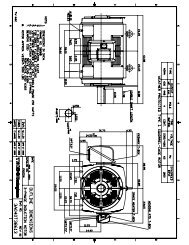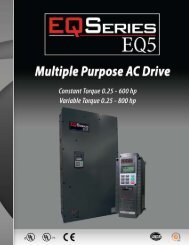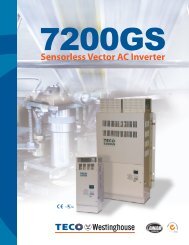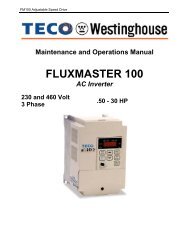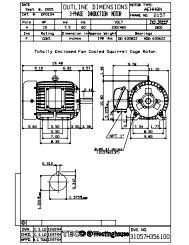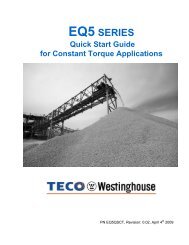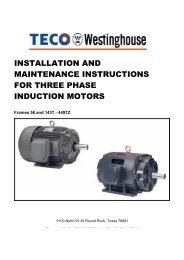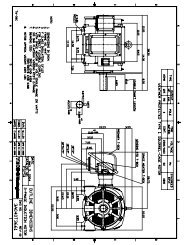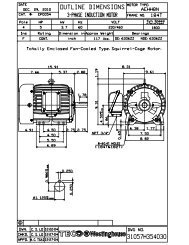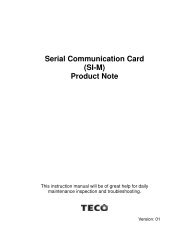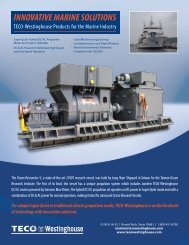EQ7 Series Instruction Manual - TECO-Westinghouse Motor Company
EQ7 Series Instruction Manual - TECO-Westinghouse Motor Company
EQ7 Series Instruction Manual - TECO-Westinghouse Motor Company
You also want an ePaper? Increase the reach of your titles
YUMPU automatically turns print PDFs into web optimized ePapers that Google loves.
• Precautions for connection of peripheral equipment<br />
(1) Phase-advancing capacitors for power factor correction<br />
Do not mount a phase-advancing capacitor for power factor correction in the inverter's input (primary) or output<br />
(secondary) circuit. Mounting it in the input (primary) circuit takes no effect. To correct the inverter power factor,<br />
use an optional DC reactor (DCR). Mounting it in the output (secondary) circuit causes an overcurrent trip,<br />
disabling operation.<br />
An overvoltage trip that occurs when the inverter is stopped or running with a light load is assumed to be due to<br />
surge current generated by open/close of phase-advancing capacitors in the power system. An optional DC/AC<br />
reactor (DCR/ACR) is recommended as a measure to be taken at the inverter side.<br />
Input current to an inverter contains a harmonic component that may affect other motors and phase-advancing<br />
capacitors on the same power supply line. If the harmonic component causes any problems, connect an optional<br />
DCR/ACR to the inverter. In some cases, it is necessary to insert a reactor in series with the phase-advancing<br />
capacitors.<br />
(2) Power supply lines (Application of a DC/AC reactor)<br />
Use an optional DC reactor (DCR) when the capacity of the power supply transformer is 500 kVA or more and is<br />
10 times or more the inverter rated capacity or when there are thyristor-driven loads. If no DCR is used, the<br />
percentage-reactance of the power supply decreases, and harmonic components and their peak levels increase.<br />
These factors may break rectifiers or capacitors in the converter section of the inverter, or decrease the<br />
capacitance of the capacitors.<br />
If the input voltage unbalance rate is 2% to 3%, use an optional AC reactor (ACR).<br />
Voltage unbalance(%)=<br />
Max voltage(V) - Min voltage(V)<br />
Three-phase average voltage(V)<br />
×67 (IEC 61800-<br />
3)<br />
(3) DC reactor (DCR) for correcting the inverter input power factor (for suppressing harmonics)<br />
To correct the inverter input power factor (to suppress harmonics), use an optional DCR. Using a DCR increases<br />
the reactance of inverter’s power source so as to decrease harmonic components on the power source lines and<br />
correct the power factor of the inverter.<br />
DCR models Input power factor Remarks<br />
DCR2/4-/A/B Approx. 90% to 95% The last letter identifies the capacitance.<br />
DCR2/4-C Approx. 86% to 90% Exclusively designed for inverters of 50 HP or above.<br />
For selecting DCR models, refer to Chapter 11 "SPECIFICATIONS."<br />
(4) PWM converter for correcting the inverter input power factor<br />
Using a PWM converter (High power-factor, regenerative PWM converter) corrects the inverter power factor up to<br />
nearly 100%. When combining an inverter with a PWM converter, disable the main power down detection by<br />
setting the function code H72 to "0." If the main power loss detection is enabled (H72 = 1 by factory default), the<br />
inverter interprets the main power as being shut down, ignoring an entry of a run command.<br />
1-5




